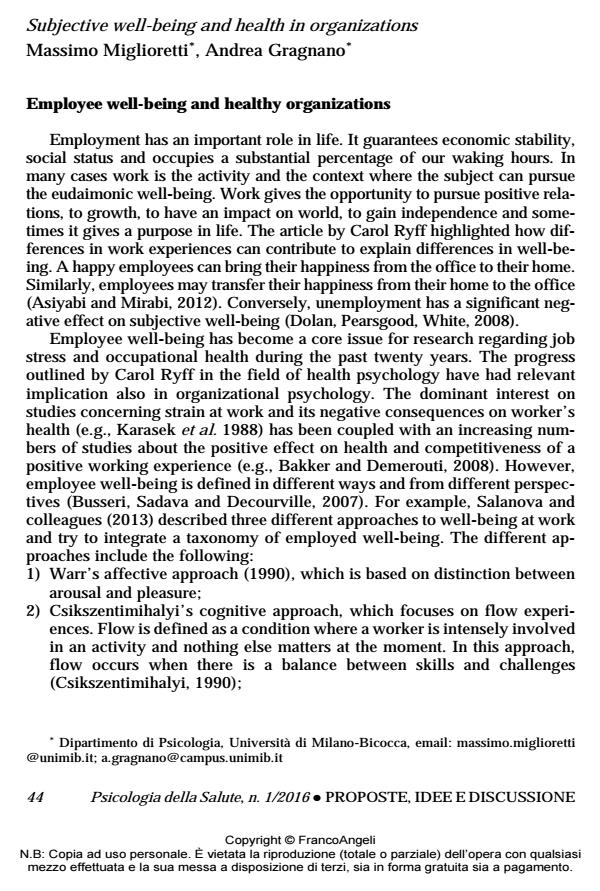Subjective well-being and health in organizations
Titolo Rivista PSICOLOGIA DELLA SALUTE
Autori/Curatori Massimo Miglioretti, Andrea Gragnano
Anno di pubblicazione 2016 Fascicolo 2016/1
Lingua Inglese Numero pagine 5 P. 44-48 Dimensione file 37 KB
DOI 10.3280/PDS2016-001006
Il DOI è il codice a barre della proprietà intellettuale: per saperne di più
clicca qui
Qui sotto puoi vedere in anteprima la prima pagina di questo articolo.
Se questo articolo ti interessa, lo puoi acquistare (e scaricare in formato pdf) seguendo le facili indicazioni per acquistare il download credit. Acquista Download Credits per scaricare questo Articolo in formato PDF

FrancoAngeli è membro della Publishers International Linking Association, Inc (PILA)associazione indipendente e non profit per facilitare (attraverso i servizi tecnologici implementati da CrossRef.org) l’accesso degli studiosi ai contenuti digitali nelle pubblicazioni professionali e scientifiche
- Cognitive and affective-motivational states as mediators of the association between presenteeism and job satisfaction José-María Figueredo, Cristina García-Ael, Andrea Gragnano, Gabriela Topa, in European Review of Applied Psychology 100865/2023 pp.100865
DOI: 10.1016/j.erap.2022.100865 - Work–Life Balance: Weighing the Importance of Work–Family and Work–Health Balance Andrea Gragnano, Silvia Simbula, Massimo Miglioretti, in International Journal of Environmental Research and Public Health /2020 pp.907
DOI: 10.3390/ijerph17030907 - Predictors of Burnout and Well-Being Among Veterinarians in Slovenia Ožbalt Podpečan, Valentina Hlebec, Metka Kuhar, Valentina Kubale, Breda Jakovac Strajn, in Veterinary Sciences /2025 pp.387
DOI: 10.3390/vetsci12040387
Massimo Miglioretti, Andrea Gragnano, Subjective well-being and health in organizations in "PSICOLOGIA DELLA SALUTE" 1/2016, pp 44-48, DOI: 10.3280/PDS2016-001006